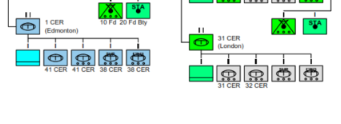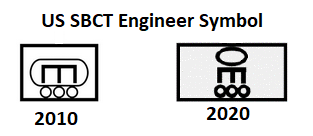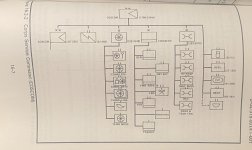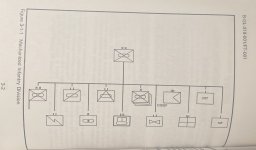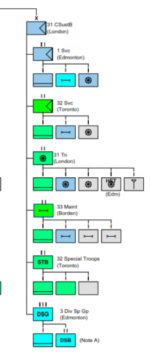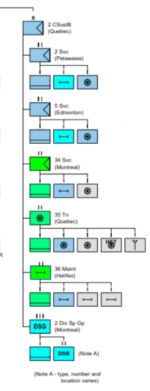For the record - neither would I.
A sustainment brigade is a deployable asset. Here's a couple of snippets from "ATP 4-93 - Sustainment Brigade"
A sustainment brigade is fully deployable and designed to be specifically tailored through atts to the mission. In the US there are numerous CSS bns, coys and dets that can be grafted into a Sustainment Brigade. Because of the small size of our Army I have given some of those a home within the brigade itself. Whether or not any or all of those elements deploy in any given circumstance depends on the situation.
That's not the question though.
I agree fully that the Bde, through its svc bn should be able to support itself with all of its 1st and 2nd line needs whether deployed in whole or in part. But, even an Army as small as ours needs to fulfil the functions being provided by a US Sustainment brigade. We do it in part through CFJOG, 1 Cdn Div HQ and ad hoc Theatre Activation Teams, NSEs and Mission Draw-Down Teams. All I'm doing is putting those existing elements into a deployable formation which uses existing Reg F personnel already providing those functions as its core and adding a Res F structure around that specifically so that the activities can be scaled up in time of need.
To put all of those capabilities into Bde Svc bns is inefficient. The existing Svc bns are not structured for that and would be overwhelmed, and if so structured would have resources that would sit idle for most of the time when the brigade has no elements forward deployed.
Agreed to an extent.
I take a look at things from the viewpoint of a US brigade support battalion (BSB) and factor out that it includes a medical company, which in our establishment is the Field Ambulance. I also factor out the Forward Support Companies, which in our establishments are the HQ or admin or CSS companies organic to each regiment or battalion.
That basically leaves an ABCT's BSB with
- a headquarters company (85 all ranks, 24 vehicles);
- a field maintenance company (118 all ranks, 46 vehicles); and
- a distribution company (140 all ranks, 75 vehicles)
- Total 343 all ranks and 145 vehicles
- (and just as an aside each of the six FSCs have approximately 150 pers in them for an additional appx 900 personnel and another 170, give or take, vehicles).
By contrast a Reg F Cdn Svc Bn already hovers between 800 and 900 all ranks (even though it has no FSCs) and I have no idea how many vehicles, nor do I have any idea as to how many of those personnel are in static only roles. If my memory serves me correctly, the deployable element of a Cdn Service Bn now has a transport company, a supply company, a maintenance company and an administration company. That's a bit of a change because in my day transportation and supply, if I recall correctly, was combined in one S&T company which operated like a US distribution company.
I have absolutely no idea why a Svc bn needs an admin company at all. But then again I'm not knowledgeable enough to argue the case one way or the other - I'm just left wondering why a full sized armoured BCT can get by with 343 people fulfilling all functions of the brigade's 2nd line support as well as its own 1st line without the need of its own admin coy. It should be sufficient to just have a small HQ and two companies - one S&T and one maintenance.
I'm a great fan of CSS but our structure leaves me wondering as to its efficiencies.



